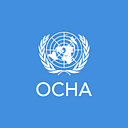Five ways the UN Security Council is protecting civilians in conflict
This year we mark the 20th anniversary since the UN Security Council added the protection of civilians in armed conflict to its agenda. Protection of civilians from insecurity and physical harm became a focus following a bloody decade in 1990 that was marked by crises in West Africa and the Balkans, and the devastating genocide in Rwanda. Today, civilians still make up the vast majority of casualties in conflict. In 2018, some 22,800 civilians were killed in just six countries: Afghanistan, Iraq, Mali, Somalia, South Sudan and Yemen; and conflicts, climate change and natural disasters forced 6.6 million people from their homes. Despite these major challenges, we have seen progress on the protection of civilians, and the issue is now at the forefront of the international peace and security agenda of both the Security Council and the wider UN.
Here we highlight five protection gains made by the Security Council over the past two decades, as featured in a research paper just released by the UN’s humanitarian response agency, OCHA. This complements the Secretary-General’s report on the protection of civilians in armed conflict, out soon.
1. Stronger protection of civilians mandates for peacekeeping missions
The Security Council outlines the protection of civilians goals of UN peace operations in their mandates. The first UN peace operation with an explicit protection of civilians mandate was in Sierra Leone in 1999. Since then, there have been many more, including in the Democratic Republic of the Congo (DRC), Liberia, Haiti, Lebanon and elsewhere. The mandates have evolved from reactive, narrow directives into expansive protection strategies, covering physical protection, the protection of humanitarian aid, displaced people, and women and children, and also promoting accountability, through support for truth, justice and reconciliation commissions, special criminal tribunals or hybrid courts. These robust mandates were drawn up, for example, for the Central African Republic (CAR), Darfur, DRC, Mali and South Sudan, with activities backed by a protection toolkit outlining concrete actions to take.
2. More protection-focused resolutions
In the 20 years since the first protection of civilians resolution, 1265, was passed in 1999, the Council’s work has centred around strengthening the protection of civilians architecture by adopting a series of thematic resolutions, as well as integrating protection concerns into country-specific resolutions. Thematic examples have ranged from holistic resolutions covering the range of protection of civilians-related issues, to dedicated resolutions on the protection of UN and humanitarian personnel, journalists, medical care, and food security in armed conflict.
3. UN sanctions imposed when protection of civilians flouted
Increasingly, over the past two decades, the Security Council has included protection-related criteria in sanctions regimes. Sanctions may be linked to violations of international humanitarian law or human rights, sexual violence, forced recruitment of children into armed forces, attacks against civilian infrastructure such as hospitals and schools, forced displacement of civilians in conflict zones, and the obstruction of humanitarian assistance. For instance, sexual and gender-based violence are criteria for sanctions in CAR, Libya, Somalia and South Sudan.
4. Better evidence collection on protection violations
In most of today’s conflicts, strong monitoring and reporting systems have been set up to identify when human rights or international humanitarian law violations are taking place. This means human rights violations are more closely monitored, as are civilian casualties, and investigations carried out to follow up. The increased level of detail is helping to boost compliance and has helped the Council be more specific about the performance and obligations of Governments and warring parties.
5. Promoting accountability
Over the past 20 years we have seen important examples of accountability in action. For instance, the Security Council created an international tribunal in Sierra Leone and investigations into abuses in Sudan and CAR. It also referred several situations to the International Criminal Court, including in Sudan and Libya. These efforts helped fight against impunity by deterring, ending and remedying violations. In recent years, the Council has increasingly focused on promoting national and regional justice, as well as local transitional justice efforts, for example by supporting the operationalization of the special criminal court in CAR.
Next steps
We have seen immense progress, but there is ample room for more. For starters, we need to see more consistency in how protection concerns are addressed in different contexts, and accountability measures need to be better supported and funded. Moving forward, the Security Council can play a vital role in promoting all of these issues, but, to make a real difference for people in conflict, its efforts will only work if they are backed up by Governments and warring parties.
